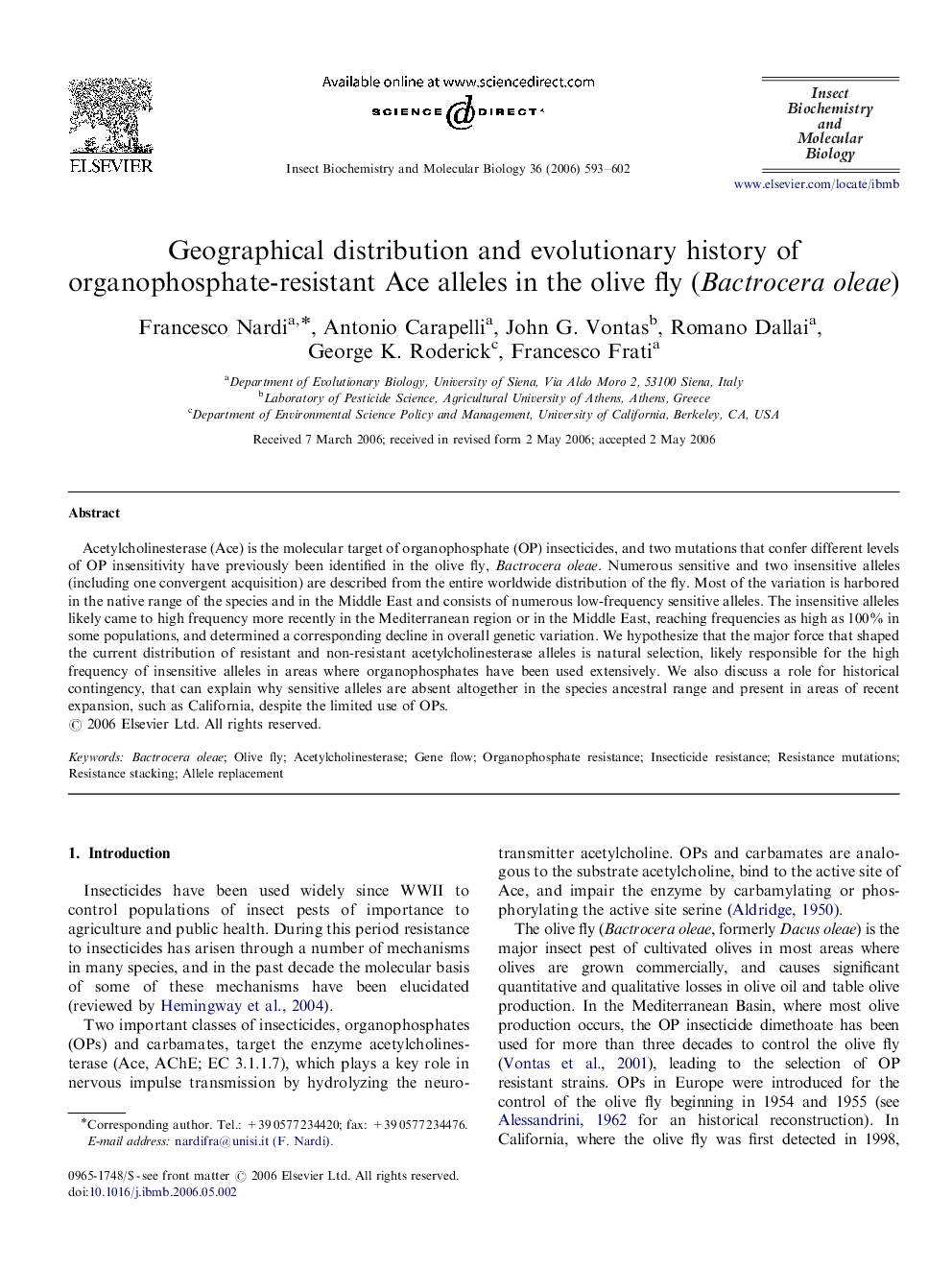| Article ID | Journal | Published Year | Pages | File Type |
|---|---|---|---|---|
| 1983024 | Insect Biochemistry and Molecular Biology | 2006 | 10 Pages |
Acetylcholinesterase (Ace) is the molecular target of organophosphate (OP) insecticides, and two mutations that confer different levels of OP insensitivity have previously been identified in the olive fly, Bactrocera oleae. Numerous sensitive and two insensitive alleles (including one convergent acquisition) are described from the entire worldwide distribution of the fly. Most of the variation is harbored in the native range of the species and in the Middle East and consists of numerous low-frequency sensitive alleles. The insensitive alleles likely came to high frequency more recently in the Mediterranean region or in the Middle East, reaching frequencies as high as 100% in some populations, and determined a corresponding decline in overall genetic variation. We hypothesize that the major force that shaped the current distribution of resistant and non-resistant acetylcholinesterase alleles is natural selection, likely responsible for the high frequency of insensitive alleles in areas where organophosphates have been used extensively. We also discuss a role for historical contingency, that can explain why sensitive alleles are absent altogether in the species ancestral range and present in areas of recent expansion, such as California, despite the limited use of OPs.
